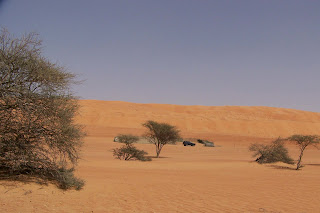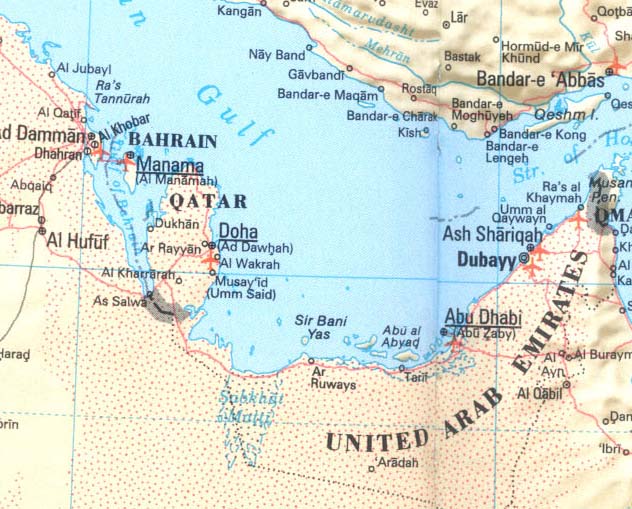
Last month I traveled to the Sultanate of Oman, referred in the western world as Oman. The magic of many of these political states seems lost when we shorten the name, removing sultanate, kingdom and so forth. The Kingdom of Saudia Arabia is simply Saudia Arabia, although abbreviated here as KSA, forcing us to remember it is a kingdom. The United Arab Emirates retain their formation status in their name, although the world commonly refers to them as the UAE. Other kingdoms in the Arabian Peninsula include the Kingdom of Bahrain and the Hashemite Kingdom of Jordan where I traveled on route to Israel. Qatar and Oman are both emirates and Yemen is the only republic. But it is the magic invoked by sultanate and kingdom that seems to harken back to stories we read as children that we regain when visiting these countries and see and hear them as they describe themselves. ‘Welcome to the Sultanate of Oman,’ is offered as we land in Muscat, on time as promised by Captain Abdullah, who declared on take-off that we would reach Muscat at 10:05 p.m., inshallah. I myself prefer to rely on the expertise of the pilot than god’s will. But whatever, it worked.
The origin of the name Oman has been variously suggested and at times it has been referred to as Magan, an allusion to its history of shipbuilding. The early Roman historian, Yalainous (23 - 79AD) was one of the first to acknowledge a city named Omana, which is also mentioned in the writings of Ptolemy.
I prepared for my trip by reading The Southern Gates of Arabia, by Freya Stark, originally published in 1936. An account of her travels in what is now Yemen, just west of Oman and south of Saudia Arabia today, it has recently been republished with an introduction by Jane Fletcher Geniesse, author of a biography of Stark. Stark’s account of her attempts to follow the ancient frankincense route in the remote Hadhramaut Valley offers an excellent introduction to the countryside and people some 70 years ago. Her writing is extraordinary and I offer a few seductive passages:
No grimmer coast can be imagined. The mountains are sharp – naked apparently as when they hissed in black coils from the darkness of the earth, lonely and hard as death, and with a derelict and twisted beauty. Their cliff faces press one behind the other towards the sea, whose luminous moving waves seemed to repeat in gentler and more living form the chaos of their desolate chasms and ridges.
But here, between one village and the next, there is nothing except the wind when it blows: and on a still night, that waterless silence is so still that you may fancy you hear in its arid quiet the growth of the desert scrub beneath its breastwork of thorns.
People as well are depicted wonderfully through her lens:
He was showing a Victorian disapproval of females who do not keep themselves to themselves, a thing I find dull and difficult to do. He was, moreover, stupid, and when he got an idea into his head, clung to it with a tenacity of people to whom ideas are not an everyday occurrence.
Freya Stark died at 101 in 1993.
Oman was renowned for its role in ocean navigation both because of the size of its ships and by its prolific trade in copper, stone and timber to the Mesopotamian cities. Due to its strategic position lying on some of the world's most important trade routes, the ports of Sohar and Muttrah have held great prominence among spice, edible oil and textile trading merchants. By around 300AD, Oman was considered one of the world's wealthiest countries due to its abundance of frankincense, which, at one time, was more valuable than gold. Today, all gift shops sell small amounts of frankincense.
The earliest evidence of human habitation seems to be around 10,000 bce during the stone age. Remains include rock carvings around the area of Muscat. Fast forward to the 3rd millennium bce and we find some of the earliest traces of towers, carbon-14 dated to ca. 2750 bce. It is the continued presence of towers around the countryside, both watch towers and towers to protect groups of people, that is so visible today.
In an article published in the May-June 1983 issue of Aramco World, John Lawton writes
Oman is a land of 1,000 forts - at least. They tower above the treetops of inland oases. They cling to the cliffs above ancient ports. And over virtually every village, fortified watchtowers perch atop handy crags high enough to command a view of approaching enemies.
Many of the forts date back several centuries - magnificent reminders of Oman's turbulent past - and though most are crumbling, some have been, or are being, restored and one was defended in battle as recently as 1972. …
This masterpiece of fortification [Nizwa fort] was built by Iman Sultan ibn Saif, who ejected the Portugese from Muscat, in 1650, without - so the story goes - firing a shot. It seems an Indian merchant named Narutem had a daughter whom the Portugese commander of the Muscat garrision wanted to marry and the only way Narutem could prevent this was to have the Portugese driven out. Narutem persuaded the commandant to replace the water, food and gunpowder in Muscat with fresh supplies. But when the cisterns and stores were emptied, Narutem sent a message to the imam to attack before they were restocked.
In Muscat, there are two special forts - twin, fairy-tale forts built by the Portugese in the 1580s to protect their Far Eastern trade routes - which featured in several other colorful episodes in Oman's history. In 1782, for instance, the two forts bombarded each other across the harbor - Ahmad ibn Sa'id in one, his two rebellious sons, Saif and Sultan, in the other.
Despite this, and other fierce battles fought in Oman's history, the two forts remain in near-perfect condition, providing visitors with one of their most vivid memories of Oman though as sentinels these forts, like the others scattered across the crags and cliffs of the coast and hinterland, are now entirely symbolic. Oman's main form of defense falls to the jet fighters, missile boats and other sophisticated weaponry of the country's modern armed forces.
My visit in Oman took me to many forts, including Mizwa (Nizwa), capital city to Oman in the 6th and 7th centuries, where a booming market does a great business. The town has an immense palm oasis which stretches 8 kilometers along two wadis.

The town in fact is an oasis, enclosed by a series of mountains, one of which is the famous green mountain, al Jabal al Akhdar. Inside anumber of forts have been restored affording visitors a sense of living in these building. A couple illustrations give a sense.


On another day we drove north of Muscat along the shore to Barka where I visited its fort and fish market just off the beach.


We then proceeded to the ancient fort of Nakhl set among acres of palm groves and protected by the surrounding mountains, perfectly situated for defense.

Our visit to the 18th century Al-Hazm fort with its gigantic carved doors found it closed, under restoration. But the security guard allowed a walk through the courtyard, an inspection of the carved doors, and servings of coffee, dates and local sweets.

From here we proceeded to one of a number of hots springs - here we see tourists walking in the warm/hot water and taking pictures of all of us.

On the final full day tour we drove to Mudairib, another village dominated by its fort, and the childhood home of our guide. From there we proceeded to the evergreen wadi, Wadi Beni Khalid, whose presence encircled by mountains immediately made clear the expression I had heard about villages, ‘it is within the mountain.’ To get there we took winding roads with vertical drop-offs up and then down a high mountain, gazed at villages nestled well below us, all supplied with electrical lines and water. The wadi itself did not disappoint.


We left a crowd there picnicking and swimming and drove to Wahiba Sands, considered one of the most fascinating and mysterious regions of Oman, with its quick changing colors at different times of the day.

I spent the final morning visiting museums and wandering around the port, reacquainting myself with my almost visceral love of ports and their evocation of journeys beginning and ending.





